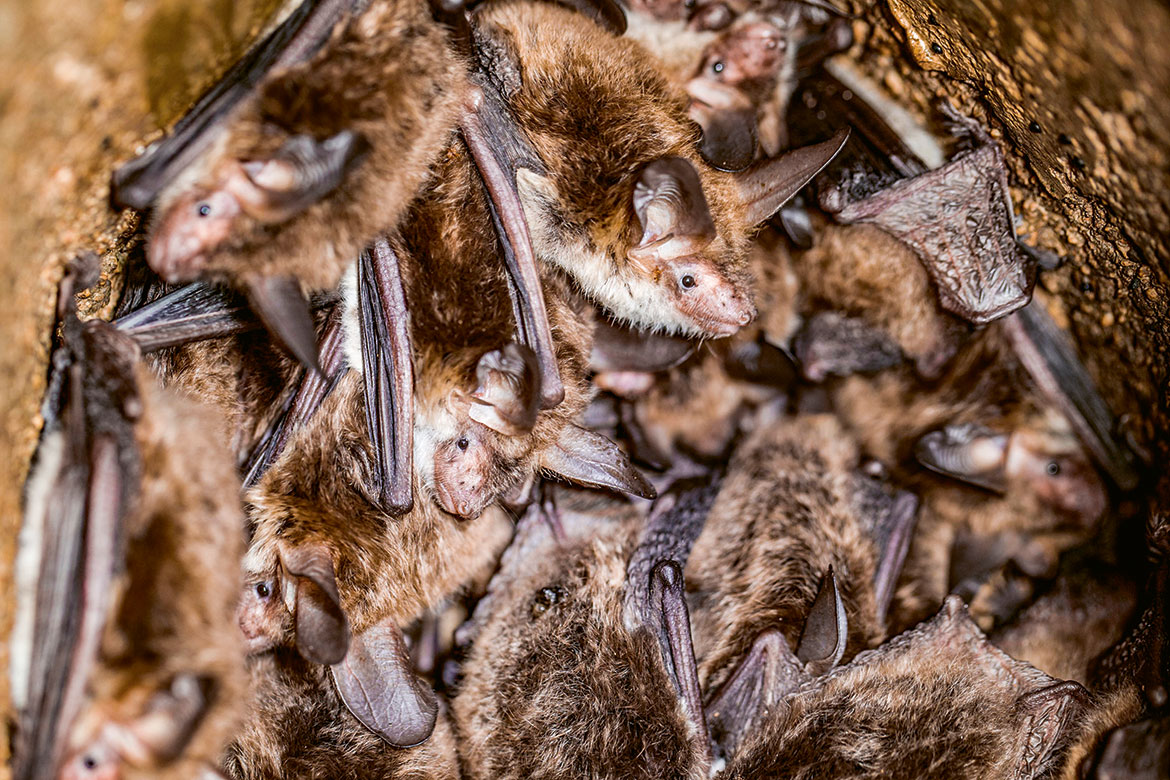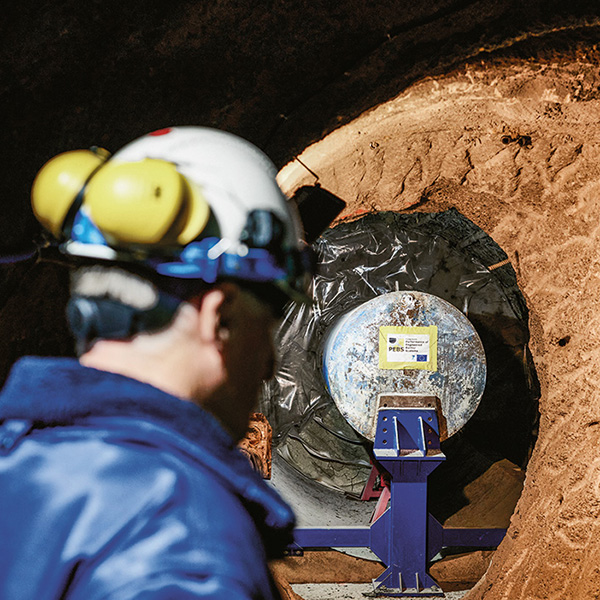BRAIN RESEARCH
An active mini-brain
Functional neuronal networks form spontaneously in organoids of nerve cells, just like in the brain.

A clump of cells: brain cells are here coloured green, cell nuclei are blue. | Image: Gabriel Luna
These clumps of cells are just four millimetres in diameter, and for some experiments the researchers cut them into even thinner slices. They are brain organoids that have been grown from human stem cells by the neuroscientist Stella Glasauer, who is funded by the SNSF and is part of a team led by Kenneth Kosik at the University of California in Santa Barbara. They have found that functional networks of nerve cells can develop in these organoids, similar to those found in the human brain.
To this end, Glasauer’s colleague Tal Sharf provided the organoids with over 26,000 routable electrodes, of which just over 1,000 can be recorded simultaneously. This enabled the team to localise the nerve impulses precisely, and also to register the temporal sequence of their tiny fireworks.
Electrical impulses were generated between the nerve cells after only two weeks. They increased over the next few months, and became more and more synchronised in their intensity and timing. This allowed the team to conclude that the nerve cells were interacting functionally with each other. They were even able to change the activity of these networks using the tranquiliser diazepam.
In the future, the research team would like to use these organoids primarily to study neurodevelopmental disorders. “However, these mini-organs still only correspond to the cerebral cortex of the human brain”, says Glasauer. This means that their results can only be transferred to the entire human brain to a limited extent.




